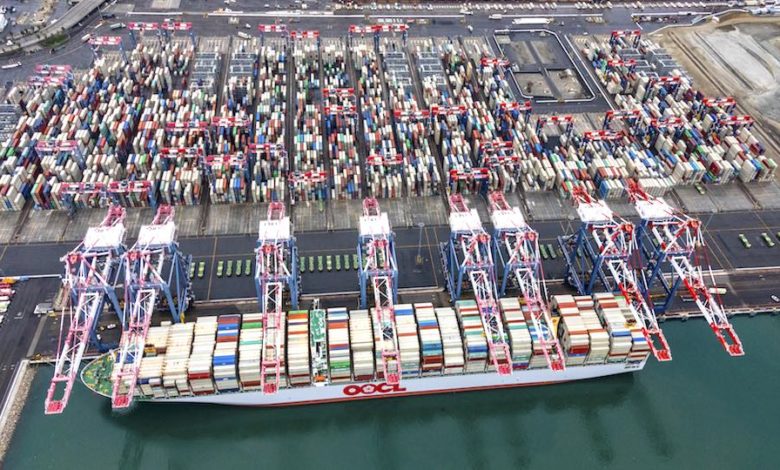[[{“value”:”

Shipping is reeling from what could be the most seismic decision to effect the industry yet in the opening weeks of Donald Trump’s second term in office.
The American president will make a decision, likely in around a month’s time, on whether to carry out suggestions made by the office of the US Trade Representative following an investigation carried out over the past year into China’s growing dominance in maritime, especially in the realm of shipbuilding.
The USTR report cites artificially suppressed labour costs, forced technology transfer and intellectual property theft among a raft of accusations levelled at Beijing.
The trade office has recommended potential fees of up to $1.5m per port call for Chinese-built vessels, $1m per port call for operators of Chinese-built ships, and mandatory US-flag shipping requirements with March 24 set as the deadline for public comments to be made after which the president will make his decision.
The majority of ocean-going ships would pay the maximum port fee given their net tonnages, according to analysis by Jefferies, an investment bank.
“These fees would likely require re-organizing fleet patterns and make US calls more lucrative on a freight rate basis, which operators would aim to pass on,” a note from Jefferies stated.
We might as well suspend trying to make credible forecasts of future supply-demand balance
The most affected sector is likely containerships given their multiple port calls. A $1.5m fee spread against the average 10,000 teu ship calling in the US would equate to $150 per teu or $300 per feu, according to Jefferies calculationsw, taking today’s China-Los Angeles rate quotes up from $3,000per feu to $3,300 per feu. A VLCC cargo from the US Gulf to China costs $8.3m in today’s market or $4.20 per barrel, but that would rise to $4.95 per barrel including a $1.5m fee according to Jefferies. Were Trump to approve of the USTR measures, Dutch bank ING said the ripple effects will impact global supply chains, investor confidence, and international relations, creating even more uncertainty further on, as businesses grapple with enduring low arrival reliability with potential new disruptions and increased costs.
As with many industries, China has come to dominate shipbuilding this century, moving from a global market share of less than 10% of the global orderbook to a commanding two-thirds stranglehold by the end of last year. The US, by contrast, has a market share of just 1%.
The US has been engaging with Korean and Japanese shipbuilders in a belated bid to bolster its faded shipbuilding sector, while one of Trump’s first acts back in power was to enact a blanket 10% tariff on Chinese imports.
A spokesperson for China’s Ministry of Commerce in Beijing commented on the USTR’s recommendations: “The US measures will not only fail to revitalise its shipbuilding industry but will also raise shipping costs on related routes, exacerbate its domestic inflation, reduce the global competitiveness of US goods, and hurt the interests of its port operators and dockworkers.”
In the five weeks since Trump has returned to the White House he has upended world trade with tariffs, a push for peace in Ukraine, a renewed ‘maximum pressure’ strategy on Iran, and the creation of a National Energy Dominance Council among many measures taken. For shipping, carrying out the USTR’s recommendations – a very popular move with American unions – could prove to be the most dramatic ruling yet.
“As the Trump 2.0 reality show unfolds, as it does daily, often with singular market-moving tweets, we might as well suspend trying to make credible forecasts of future supply-demand balance across shipping sectors. Underwhelming spot earnings render shipping sentiment downbeat while we seek greater clarity on today’s geopolitical, trade and social threats,” noted a recent report from broker Hartland Shipping.
The post Container sector set to take biggest hit from US plans to charge Chinese-built vessels appeared first on Energy News Beat.
“}]]
Energy News Beat
